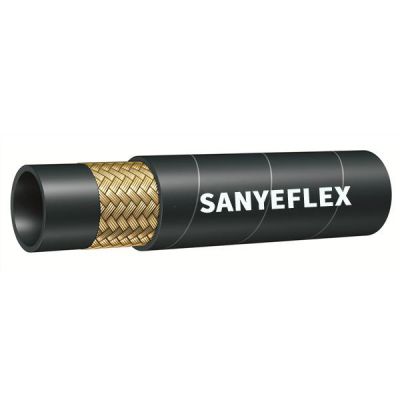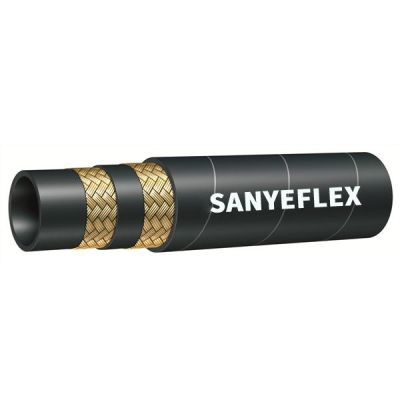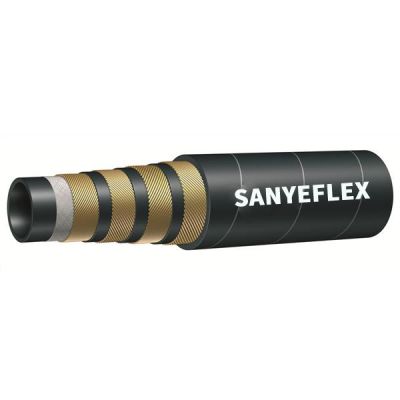05. 31, 2023
Hydraulic hoses are essential components of hydraulic systems, enabling the transfer of pressurized fluid to power various machinery and equipment. These hoses play a critical role in industries such as construction, manufacturing, agriculture, and transportation. Understanding the basics of hydraulic hoses is fundamental to ensuring their proper selection, installation, and maintenance. In this article, we will explore the key components and functions of hydraulic hoses, shedding light on their importance in hydraulic systems.
Hydraulic hoses are typically constructed with three layers: an inner tube, reinforcement layer(s), and an outer cover. The inner tube is designed to withstand the specific fluid being transported and prevent leakage. It is commonly made of synthetic rubber, thermoplastic, or PTFE (polytetrafluoroethylene). The reinforcement layer(s) provide structural integrity and strength to the hose, with materials such as textile fibers, steel wire braids, or steel wire spirals. The outer cover protects the hose from external factors such as abrasion, chemicals, and weather conditions. Different materials and construction techniques are used based on the desired hose characteristics and application requirements.
Hydraulic hoses need to be flexible to accommodate the movements and vibrations in hydraulic systems. The flexibility of a hose depends on its construction, materials, and design. The bend radius refers to the minimum radius that a hose can bend without causing damage or excessive pressure loss. It is crucial to select a hose with an appropriate bend radius for the specific application to ensure smooth operation and prevent premature failure.
Hydraulic hoses are designed to handle different pressure levels based on the system's requirements. Pressure ratings are specified by the manufacturer and are typically categorized as working pressure, burst pressure, and impulse pressure. Working pressure refers to the maximum continuous pressure the hose can safely handle. Burst pressure indicates the pressure at which the hose is likely to rupture. Impulse pressure represents the pressure spikes that occur during system operation. It is important to select hoses with pressure ratings that match or exceed the requirements of the hydraulic system to ensure safety and performance.
Choosing the correct hose size is crucial for optimal hydraulic system performance. Hose sizing involves considering the inside diameter (ID) and length of the hose. The ID determines the flow rate and pressure drop within the system. A hose with a smaller ID can result in increased pressure drop and reduced system efficiency. Length is also an important consideration as excessive hose length can lead to pressure losses. It is essential to consult the manufacturer's guidelines or seek expert advice to determine the appropriate hose size for the specific application.
Hydraulic hoses must be compatible with the fluid being transported within the system. Different fluids have varying chemical compositions, temperatures, and viscosities, which can affect the hose materials and overall performance. It is important to select hoses that are compatible with the specific fluid to prevent degradation, leakage, or failure. Additionally, consider factors such as temperature range, resistance to chemicals, and potential contaminants that may be present in the fluid.
In conclusion, hydraulic hoses are integral components of hydraulic systems, enabling the transmission of pressurized fluid to power machinery and equipment. Understanding the basics of hydraulic hoses, including their construction, materials, flexibility, pressure ratings, sizing, and compatibility, is essential for selecting, installing, and maintaining these hoses effectively. By considering these key factors and seeking expert guidance when necessary, businesses can ensure the proper functioning and longevity of hydraulic systems, contributing to improved productivity and operational efficiency. We are a hydraulic hose supplier. If you are interested in our products, please contact us now!
Nuestro Cliente
Teléfono: +86 400 0318 111
Correo electrónico: admin@sanyeflex.com
Agregar: #218 Zhongke Street, zona de alta tecnología, ciudad de Hengshui, provincia de Hebei, China. 053099


